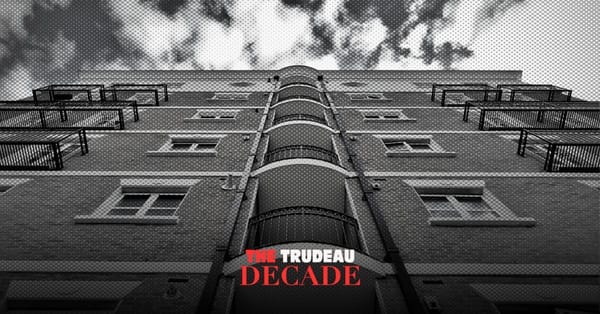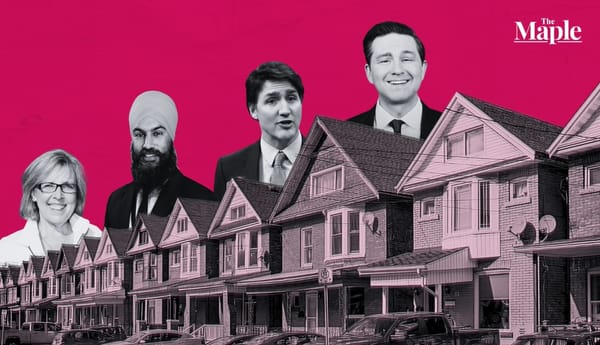An otherwise nondescript, low-rise apartment building in Toronto’s inner-suburbs has become a bright beacon of working class struggle against evictions.
While politicians and professional advocates offer statements and studies, a group of working class people took matters into their own hands and defeated two renoviction attempts. The successful campaign waged by tenants of 2419 Keele St. in North York shows the way to others who decide to defend their homes in an increasingly hostile rental housing market, including from renoviction attempts.
Renoviction is when a landlord attempts to evict a tenant by claiming they will complete major renovations and need the unit to be empty. In Ontario, renoviction is prescribed by law.
The legal process starts with the landlord issuing a Form N13 to the tenant indicating the landlord’s intent. If the tenant doesn’t leave, the landlord files an application with the Landlord and Tenant Board (LTB), which will eventually decide at an online hearing whether to order an eviction or not.
By law, the tenant has a right to move back into the rental unit after renovations have been completed. In practice, though, this requires a tenant to incur significant costs to move and find alternative housing for an indeterminate yet lengthy period of time, and be prepared to come back at a moment’s notice once the renovations are done, and before their landlords prevent them from returning for good by installing a new tenant at higher rent.
In 2020, the Ontario government passed Bill 184 which sped up the eviction process of tenants who fall behind on rent payments, and at least doubled fines against landlords found to have renovicted tenants in bad faith, depending on whether they’re an individual or corporation. But for landlords chasing big returns in Toronto’s real estate market, fines are simply a cost of doing business and, as the case of tenants at 795 College St. demonstrates, they don’t help get tenants back into their homes. Nor have they even dissuaded that particular landlord, or others, from continuing to issue eviction notices for alleged renovations.
In 2019, Toronto City Council struck a sub-committee to take a closer look at renovictions, but little has been heard from it since. While the City considers mimicking a renovictions by-law similar to New Westminster, British Columbia’s, tenants in Toronto who habitually deal with property standards violations when fighting renoviction know that by-laws are not a panacea.
Meanwhile, nonprofits are content to tally “illegal” renovictions, bemoaning a lack of data to support tenants’ stories of displacement despite evidence of rising no-fault evictions in Ontario.
The Struggle At 2419 Keele Street
This February, the building at 2419 Keele St. was purchased by a newly formed corporation, and within days all 12 tenant households had received N13 eviction notices for extensive renovations. Often, tenants who receive eviction notices move out under pressure, whether or not they understand that a notice doesn’t legally obligate them to vacate. Not at 2419 Keele. Soon after receiving the notices, tenants held a meeting at the building where every unit was represented and tenants committed to fighting their evictions together.
Tenants learned that, at the time of incorporation, the corporation that purchased their building was directed by Brendan Riley, a real estate investor. After an initial demand letter signed by all tenants to the landlord received no response, tenants decided to hand out flyers and put up posters in the area of the office of Riley Real Estate Ventures.
In late March, when television news coverage and a ‘comment bomb’ of one of the landlord’s virtual property showings failed to get a response, tenants delivered a letter to Riley at his house. At first, Riley ignored the tenants when they knocked at his door, but when their supporters called him out on a megaphone from the sidewalk, he soon appeared and agreed to withdraw the eviction notices.
Unfortunately, in September, new N13 notices were issued to three of the building’s tenants. If Riley thought he could avoid backlash by re-issuing eviction notices to only these tenants, he was sorely mistaken.
Tenants immediately got their story back in the news and returned to Riley’s house. This time, Riley clammed up and drove off, leaving tenants no choice but to take their fight in a new direction. After being rebuffed by Riley, tenants showed up at Riley’s wife’s naturopathic clinic to inform patrons and passersby of her involvement in the evictions. A few weeks later, the latest eviction notices were withdrawn.
Solidarity Against Renovictions
Riley’s attempts to displace tenants from 2419 Keele borrowed heavily from the playbook that has become all-too-familiar in Toronto: A new landlord appears on the scene and notifies tenants individually of their plans for the building — plans that don’t include the existing tenants.
Tenants are encouraged to sign forms terminating their tenancies in exchange for a cash buyout. Eviction is presented as inevitable, impending renovations as intolerably disruptive and buyout offers as a favour. Other hallmarks of renoviction include informal approaches prior to handing out N13 notices, initiating renovations of common areas and vacant units, disregarding in-unit repairs and building maintenance, and harassing and pressuring tenants until they accept buyouts and leave.
Sometimes this is all initiated by a real estate agent representing a long-time landlord looking to sell. And, like with 2419 Keele, in most cases of renoviction no eviction applications are formally filed, meaning there’s no record at the LTB.
RenovictionsTO, a volunteer-run project focused on renovictions, own use evictions and above guideline rent increases in Toronto, was launched a year and a half ago in part to help publicly document these cases. More importantly, the project encourages tenants to organize and fight back, connects them with people who can share experiences and offer support, and disseminates information about the landlords engaged in these practices.
Tenants at 2419 Keele got support from others who had experience fighting renoviction. In turn, they have shared their experiences with neighbours in the area, where many are now feeling displacement pressures.
Legal and policy prescriptions can’t contain the economic and physical forces driving renovictions, but the tenants of 2419 Keele have shown that the organized, self-activity of working class people can.
Deference to politicians and experts must be replaced with reliance on strength in numbers, and the intelligence and determination of working class neighbours engaged in collective struggle. Only then will our buildings, neighbourhoods and communities become sufficiently resistant to predation in the form of renovictions by landlords, investors, and the market.






